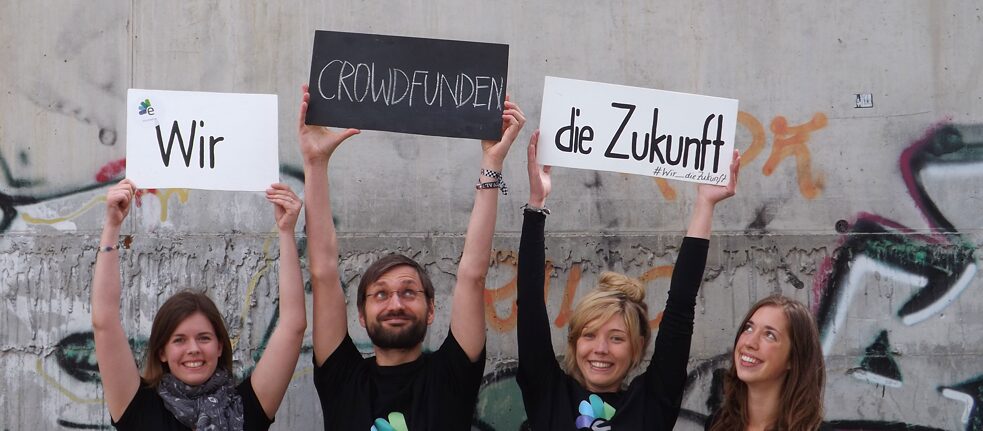Environmental activism
Climate strike online

Since the coronavirus pandemic began, climate protests have mostly moved to the internet. We take a look at the environmental movements online world.
On 20 September 2019, millions of people took to the streets of the world to demand environmentally friendly policies and compliance with the 1.5 degree climate target in the largest climate protest in history to date. Fridays for Future reported that around 1.4 million people participated in the global climate strike in Germany alone, galvanised by the #AllesFürsKlima (#EverythingForTheClimate) hashtag. Building on the momentum of this event, Fridays for Future called supporters out for weekly demonstrations. At the time, no one could have imagined that a pandemic would soon make large gatherings impossible.
Hashtags and posters
The climate protest movement was just gathering steam when the coronavirus pandemic began, forcing it to find new avenues. Fridays for Future and other climate activists have taken the movement into the safer space where most of our social lives and communities have found refuge: the internet.
Climate activists were organising online before the pandemic, of course, and using messaging apps, group chats and video conferences to network. Social distancing and coronavirus prevention now meant all protest activities had to shift online though. Hashtags took on a more central role, and instead of posing with protest posters in front of government buildings, climate activists started posting selfies with those signs on Twitter. Instead of mass protests on the streets, #climatestrikeonline has become the new home for environmental activism. Fridays for Future is using the #Netzstreikfuersklima hashtag to call on all their supporters to raise the visibility of the online strike in the offline world in the only way the pandemic allows: “We have taken our protest off the streets and online – and are hanging our protest signs where they are visible in windows, post boxes, at work, on trees in front of our houses, at store entrances and wherever else everyone can see them!”, the website says.
The benefits of online communication
The strikes on the streets are not the only part of the climate movement that has been hit by the pandemic and coronavirus prevention guidelines. The Climate Walk, a group of researchers and activists known as “Wanderers of Changing Worlds”, have been planning a 12,000 km walk right across Europe to explore and document the local effects of climate change. Their findings will become a travelling exhibition and be publicised in a series of lectures and in a documentary film. At least this was the original concept and team members had already gathered donations for the project. But the ongoing pandemic restrictions have also had an impact on the Climate Walk. A key element of the project, the scheduled starting date, might have to be moved again if immunisation does not go according to plan, for example. “We would also like to do some trial walks with different target groups including school kids, but the coronavirus has made planning very difficult,” Julia Plattner from Climate Walks says.
So at the moment, the Climate Walk team is focusing on what they can do during a pandemic. They are currently working with the University of Vienna and well-known natural and social scientists on a series of online lectures about climate change. And there has been some positive impact as well. Online communication among members has proven to be an enrichment. Climate Walk partners from across Europe regularly meet up on Zoom, often one-on-one. “Most of this communication used to take place via email and would likely not have gotten as personal,” project coordinator Eva Holzinger says. The Climate Walk network has expanded during the pandemic and team members have grown closer – and are looking forward to one day meeting face-to-face too.
Growing support for environmental projects
Ecological crowdfunding platforms like EcoCrowd are also showing how environmental activism can emerge from the pandemic stronger than ever. From organic vegetable farming in Thuringia and digging wells in Calabria to documenting the role human beings play in climate change - starting at just ten euros, activists can support projects that promote ecological and social sustainability. EcoCrowd was founded in Berlin in 2014 and receives funding from the German Environment Agency. Projects that have gotten funding can show their appreciation with a voluntary fee. Until spring 2020 offline contact was EcoCrowd’s central tenet. Activists met once a year to exchange ideas and crown the best project of the year. And even though there wasn't such a meeting in 2020, the platform is successfully financing more environmental projects than ever before.
 The EcoCrowd team.
| Photo (detail): © EcoCrowd
The EcoCrowd team.
| Photo (detail): © EcoCrowd